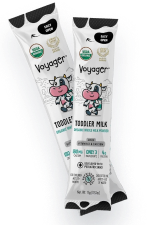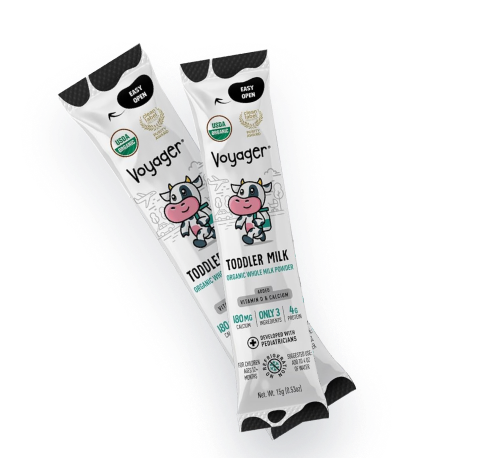
When Can Infants Start Drinking Whole Milk?
When Can Infants Start Drinking Whole Milk?
As parents, we want to ensure our children get the best nutrition to support their growth and development. A common question that arises is when it's appropriate to introduce whole milk to an infant's diet. Here’s what you need to know.
1. The Right Age to Introduce Whole Milk
According to pediatricians, infants can start drinking whole milk after they turn one year old. Before this age, breast milk or infant formula should be the primary source of nutrition. Whole milk can be difficult for infants under one year old to digest and doesn't provide all the essential nutrients they need during the first year of life.
2. Why Wait Until 12 Months?
There are several reasons why it’s recommended to wait until your baby is one year old before introducing whole milk:
-
Nutrient Needs: Infants need certain nutrients that are abundant in breast milk or formula, such as iron, which whole milk lacks in sufficient quantities.
-
Digestive System Development: A baby's digestive system matures significantly during the first year, making it better equipped to handle cow's milk after 12 months.
-
Risk of Allergies: Introducing cow's milk too early can increase the risk of developing dairy allergies.
3. Why Whole Milk is Important
Whole milk is crucial for toddlers because it provides essential fats that are necessary for brain development and overall growth. Unlike reduced-fat or skim milk, whole milk contains the full spectrum of fat content, which is vital for young children’s development. The American Academy of Pediatrics recommends whole milk for toddlers because:
-
Brain Development: The fat in whole milk is essential for the development of the brain and nervous system.
-
Energy Supply: Toddlers are highly active and need more calories to support their growth and energy levels. The fat in whole milk provides a concentrated source of energy.
-
Absorption of Vitamins: Fat-soluble vitamins such as A, D, E, and K are better absorbed in the presence of dietary fat.
4. How to Introduce Whole Milk
When your child reaches their first birthday, you can gradually introduce whole milk:
-
Start Slowly: Begin by mixing whole milk with breast milk or formula. For example, start with 75% breast milk or formula and 25% whole milk.
-
Observe for Reactions: Keep an eye out for any signs of intolerance or allergies, such as rashes, diarrhea, or vomiting.
-
Gradual Increase: Gradually increase the proportion of whole milk over a few weeks until your baby is drinking whole milk exclusively.
5. Transition Tips
-
Use a Sippy Cup: Introduce whole milk using a sippy cup to help your baby transition from bottle feeding.
-
Balanced Diet: Ensure that your child is eating a balanced diet with a variety of foods to meet their nutritional needs.
-
Consult Your Pediatrician: Always discuss any dietary changes with your pediatrician to ensure it's the right decision for your child.
6. Whole Milk Benefits
Whole milk provides essential fats that are crucial for brain development and overall growth. It also contains important vitamins and minerals such as calcium and vitamin D, which support bone health.
Conclusion
Introducing whole milk to your infant's diet is an exciting milestone. By waiting until they turn one year old and transitioning gradually, you can ensure they receive the nutrition they need for healthy growth and development. Voyager Milk is great for the transition from infant formula as you can add a small amount of the stick pack to the existing formula (or breast milk) feed.
Always consult with your pediatrician if you have any concerns or questions.
1. Recommended Drinks for Children Age 5 & Younger - HealthyChildren.org
2. The Use of Whole Cow's Milk in Infancy | Pediatrics | American Academy of Pediatrics
Other Resources:
When Can Babies Drink Milk? How to Transition to Whole Milk
Whole milk for babies or low-fat? The new research parents need to know
- January 2, 2025 Understanding AB 899: Enhancing Baby Food Safety in California
- December 23, 2024 Voyager Snowy Milk Powder Cookie Recipe
- December 23, 2024 Comparing Voyager Toddler Milk, Horizon Organic Milk Boxes, and Kendamil Toddler Milk

